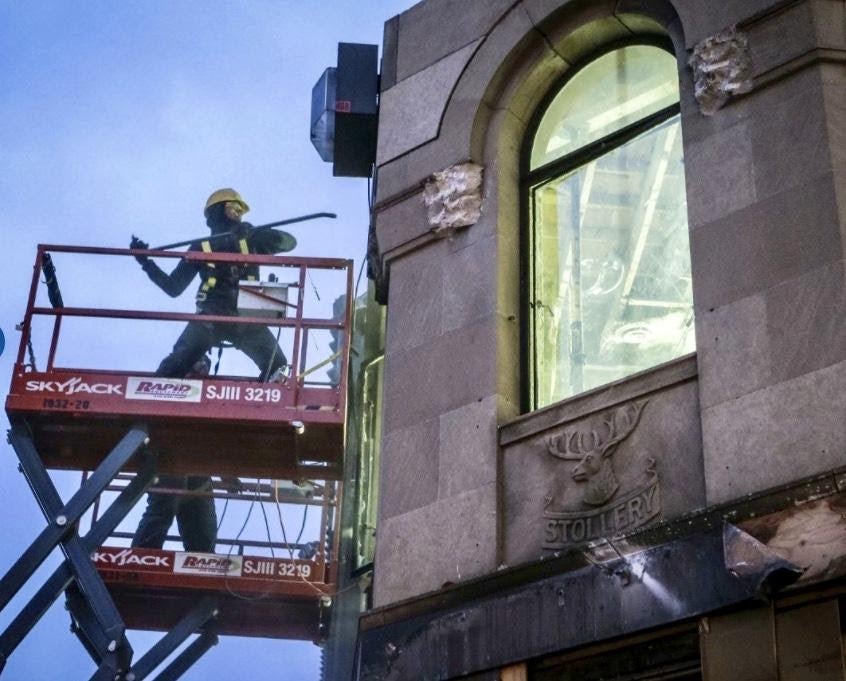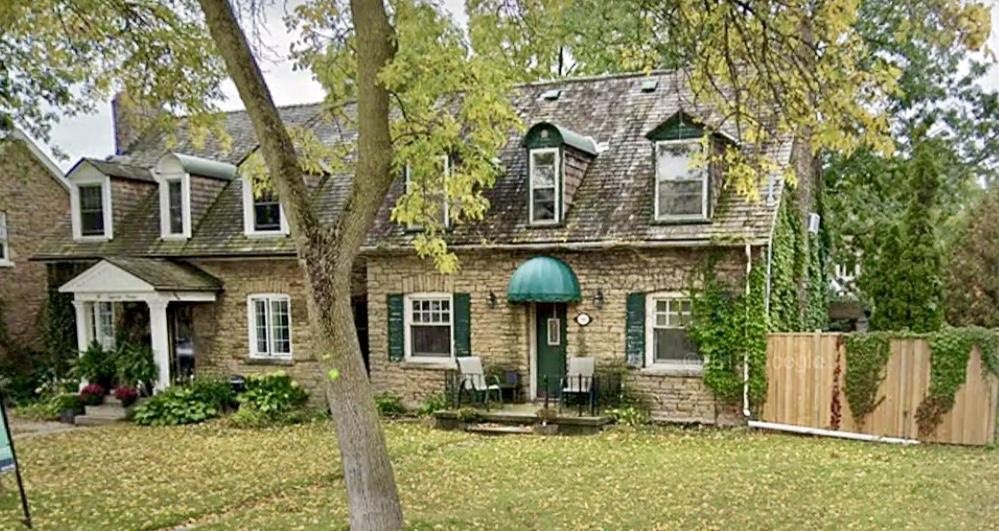
Editor’s note: We have another guest contributor this time round. Catherine Nasmith is a practicing heritage architect with offices in Toronto and Muskoka. Her work as a heritage volunteer, founding Doors Open and publishing the e-journal Built Heritage News for twenty years has been recognized with the Ontario Association of Architects (OAA) Order of da Vinci, Fellowship in the Royal Architectural Institute of Canada, two Queen’s Jubillee Medallions, and a journalism award from Heritage Canada. She serves on the Toronto and Muskoka branches of Architectural Conservancy Ontario (ACO), and was twice ACO president.
For more than ten years I have been arguing to end the virtually unfettered right to demolition under the Ontario Building Code (OBC), coining the phrase “Abolish the RIGHT to Demolish.” The issue has two sides: the first is the loss of potential heritage property because the cumbersome heritage protection system can’t keep up with the bulldozers, the second is a much bigger environmental question about wasting the staggering amounts of material and energy built into existing building stock.
Currently in Ontario, the only buildings requiring notice of a demolition application are on properties listed or designated under the Ontario Heritage Act (OHA), and in some jurisdictions like Toronto rental housing buildings. On the environmental side, there are some very limited provisions requiring reclamation of drywall, steel and masonry from the demolition stream.
What is wrong with this picture? To me, it’s hung upside down. Shouldn’t conserving built resources for cultural or environmental reasons be the rule, not the exception? In a better world we would re-use buildings whole, or at least carefully deconstruct and recycle building materials.
For heritage property, if a property is listed the owner must give the municipality 60 days notice of an application to demolish, in order to give the municipality time to consider and process a designation. If a property is designated, either individually or as part of a Heritage Conservation District, an application to demolish is decided by the municipal council. If the demolition application is refused, the owner has the right of appeal to the Local Planning Appeal Tribunal (LPAT). Of course, many (most?) historic structures are neither listed nor designated.
Other than the above exceptions, demolition permits are pretty much granted on the spot. The legislative imbalance between the virtually automatic right to demolition and the complicated protection processes available under the OHA guarantees heritage losses.

Stollerys at 1 Bloor Street West, Toronto, with demolition underway
Photo courtesy Toronto Star
Because a heritage label is the only fetter on the right to demolish, when something like Stollerys at Yonge and Bloor in Toronto bites the dust1, or more recently 98 Superior Avenue in Mimico2, people blame the heritage system. Why wasn’t such a remarkable property listed or designated?
Trying to get ahead of the wrecking ball, city council in Toronto asked heritage staff to go out and survey the whole city, hundreds of thousands of properties, for potential heritage value, a process that may take at least ten years. Meanwhile … for those trying to conserve heritage property, it’s a game of whack-a-mole — no sooner have we jumped up and down to say stop, this one is important, then another crisis appears.

98 Superior Avenue, Mimico (Toronto), now demolished
Photo courtesy blogTO
The much larger societal issue is that wasting buildings is extraordinarily bad environmental practice, one that is being recognized in other jurisdictions as part of ever more pressing climate change issues. Demolition creates a staggering amount of waste, accounting in Ontario for 20-30% of municipal landfill. Depending on what source you quote, no matter how energy efficient the new building, it takes about 50 years of energy savings to pay down the debt to the environment created by the creation and transportation of construction materials. Recognition of these issues is driving the British Architects’ Journal (AJ) Retrofirst Campaign.
A 1997 ban on construction materials in the Netherlands has resulted in a 95% recycling rate of construction waste. Closer to home, Vancouver is strongly encouraging deconstruction instead of demolition, with examples showing up to 98% recycling of building materials. In Ontario, Habitat for Humanity is offering deconstruction services, selling reclaimed materials at the Re-Store.
Another social and economic factor frustrated by the right to demolition, is the interruption of the supply cycle needed for Jane Jacobs’ “new ideas need old buildings,” and those buildings often aren’t “heritage.”
Solving the environmental problems of demolition would take policy changes across many pieces of legislation. Here I am putting forward a “simple” legislative fix to ensure a window in which we might at least catch heritage property before it hits the dustbin.
What if all applications to demolish required 60 days’ notice?
It’s not like people wake up one morning and say, “I think I’ll tear down my building tomorrow.” Such projects are planned well in advance. And it would be nice if the notice requirements included posting a notice at the property to alert the broader community.
This simple change to the OBC would open a window to identify potential heritage value, while signalling a societal recognition of demolition’s negative consequences. The 60 day delay could be coupled with Official Plan policies encouraging or requiring building re-use and waste diversion.
There are a lot of smart people out there reading this blog. I would love to hear from you what you think about this idea. Should this become an ask to government to level the playing field for heritage?
Across the province most heritage advocates are volunteers, charged with finding and advocating for the province’s heritage. We are up against a well-financed building and development industry who may not agree and who have the ear of government. This idea will fare better if it is something with widespread support. How do we build that support?

You can email Catherine at cnasmith@cnarchitect.ca.
Notes
Note 1: See the Toronto Star article here.
Note 2: See the blogTO article here.